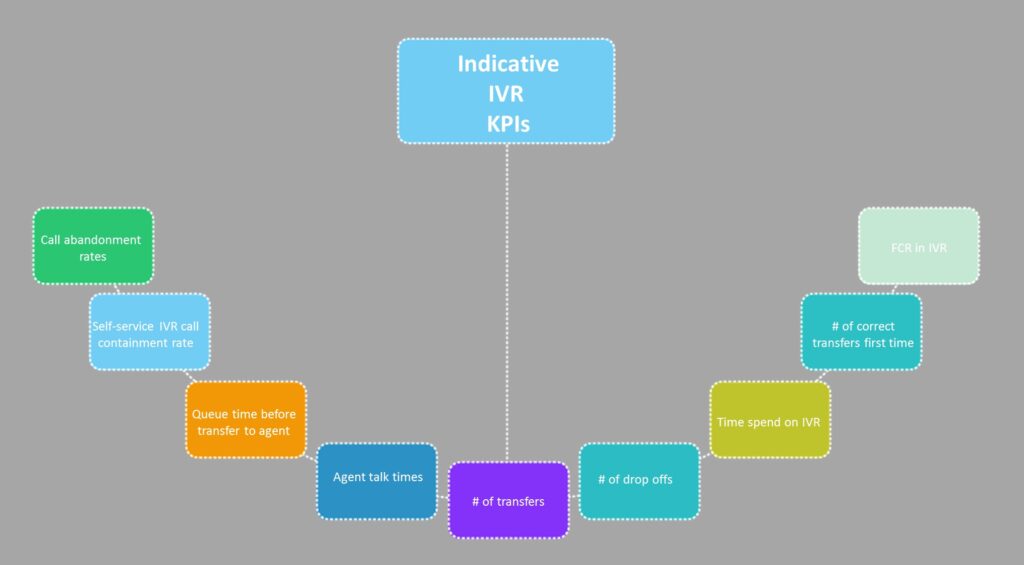Reimagine BPM function with AI
3AI October 2, 2020

Customer service has always been a priority element to any organization’s success, but with the recent advancements in technology, the advent of social media, and the digital detonation where customers are spoilt by choices; keeping customers happy and rendering consistent experience across all possible touch points is more important than ever before. Your customers expect a high level of service across every channel especially when they interact with your contact center. To deliver superior service & unmatched experience, its table stake that your contact center management system automatically culls out those customer insights expressed via opinions, perceptions, and sentiments in almost real time to make interactions more personalized. With the growing relevance of online reputation management, businesses are keeping a close vigil on what customers are talking about their organization, brand, customer service on Twitter/Facebook & other online forums, either potentially enticing more customers, or even blacker a firm’s market perception to send their stock prices spiraling down. The old adage “Any publicity is good publicity” doesn’t hold well in today’s cutthroat market place, and with customers getting empowered more each passing minute, organizations are recognizing an immediate need to keep customers contended. Unquestionably, part of keeping customers satisfied is understanding and anticipating their needs, even the latent ones better than the rest, and contact center analytics is well equipped to do that and way more. With speech analytics, contact center agents’ performance can be tracked in near real-time by uncovering knowledge/skill gaps and charting out a training regime to enhance effectiveness. It can also rationalize call-handling times and tremendously improve first-contact resolution leading to higher customer satisfaction. Every other e-commerce business today is automating customer engagement where customers are receiving order status and delivery notifications; appointment reminders; and even voicemail, email or text around the exact GPS coordinates of their package; again in near real-time right from the moment it leaves the factory/warehouse to their doorstep. In order to succeed in this ever-evolving business landscape & an enlightened customer era, today’s contact centers must:
- Understand customers better & decipher their preference insights
- Achieve higher ROI (VOC, Revenues) on contact center investments
- Achieve incrementally higher cross/up sell
- Providing a world class experience to customer
- Process optimization and higher system availability
- Reduce fixed costs
- Achieve superior performance on KPIs
- Maximize contact center effectiveness
Their operating rhythm needs to be more proactive rather than reactive. Contact centers must move beyond purely “workforce optimization” tactics to employing analytics to identify customer insights and see how they can serve them better. Every possible interaction channel out there—email, phone calls, customer surveys, web, social — is throwing different insight that needs to be closely knit together to get a more holistic view of customer interactions. Integrating data from multiple systems & innumerable sources beyond the walls of the organization, and then tying that data back to systems to make data actionable is need of the hour. These new analytics technologies/platforms/tools are no more embryonic and can be the guiding beacon, the lighthouse which agents can bank upon while they are interacting with customers. As per Aberdeen Group, leaders in the field of contact center analytics demonstrate better performance in the following areas :
- Process: Monitor content to determine keywords associated with customer satisfaction and dissatisfaction.
- Organization: Control agents’ use of greetings and closings and ensure they comply with company policies.
- Knowledge: Identify business trends through the use of speech analytics tools.
Undoubtedly, realizing above implies analytics should form the fabric of your contact center organization for superlative performance. Infusing analytics into day-to-day operations of contact centers can help leapfrog competition and unravel insights which could support decision-making at every level in the organization. Analytics can steer contact centers towards ‘Best-in-Class’ by enabling:
- Integrated view of customer interactions
- Capture, monitor and analyze what is working and what isn’t in self-service channels (IVR, Web etc.)
- Drive incrementally higher self-service interactions in service process
- Predict reasons why (and when) a customer will interact next
- Higher sales and collections revenues
- Render future contacts unnecessary
- Mine chat, social media and call transcripts to generate customer insights
- Mine calls to generate customer insights
- Optimize cost of interactions through interaction channel modelling
- Speech analytics to build real-time decision support systems
- Improve agent performance & procedural compliance
- Identify system, procedural, and operational issues
- Improve system performance
- Achieve better tracking & higher SLA adherence
- Capture, monitor and improve system performance
- Real-time decision support
Analytics can create impact across the contact center eco-system redefining experiences & operating efficiencies for all stakeholders & entities involved and aid in answering typical questions pertaining to:
- Customers
- Which customer segment is likely to experience greater churn?
- How is the customer ‘intent’ trending in various segments and how will it potentially impact X-/Up-sell opportunities?
- Developing a contact-frequency schedule to create better X/Up-sell opportunities? Predictive models for customer buying propensity
- Advisor or Contact center executive
- Predicting advisor churn
- Can I predict the risk of KPI shortfall for each advisor based on the data collected from their desktops, calls, notes and customer feedback?
- Anticipating advisor training needs and their ability to clear mandatory certifications based on desktop and behavioral data?
- Processes
- Predicting system/application outages?
- Using speech/text analytics to predict customer requirements and offer real-time next-best action suggestions to advisors
- Predicting call/ticket volumes and use that information to either increase automation or staffing or both
- Infrastructure
- How to predict infra outages in advance to restrict damage & contain costs
- How to maximize infra utilization for a better ROI
- At what capacities, performance levels etc should the infrastructure be operating on
Enabling “Self-Service Interactions”
Analytics is a key area leaders in this field are heavily investing in to enable self-service interaction. From a customer standpoint, analytics can help answer: Which IVR functions are used by customers the most? What are the usage patterns of 20%/80% menu choices? What are their chief calling reasons? Why are customers not completing their transactions on IVR and what did they choose to do next? How do we correlate VOC with the menus on offer on IVR? From a more internal perspective (i.e. the systems put in place to enable seamless customer interactions) analytics can capture, monitor, measure and predict health of IVR applications; perform outage prediction analytics, analyze IVR application log data and call data to plan intelligent transfers, reduce call abandonment and drop offs, monitor self-service success rates and error rates and the underlying menu choices – reconfigure if necessary, monitor IVR port utilizations; control waiting times through predicting call volumes across menus. Even from process perspective, analytics can help identify at what point(s) in the current menu driven user journeys are call abandonment, transfer and drop-off rates higher? Traffic analysis of calls Transferred versus calls terminated, which menu functions are currently missing in the IVR call value chain which are sought by customers? Where and why customers commence IVR and which customers finish and who doesn’t and why.

Intelligent Call Routing
Intelligent call routing is commonplace today & most contact center organizations based on user profile, call/ticket type, locational constraints, financial metrics, functional domain, application/ data base mapping, agents availability, queue lengths, historical agent performance scores etc. are able to connect a customer with the ‘best fit’ contact center executive. Here as well, Analytics sits at the core of Skill based Resource Allocation (right skill fit and right team size) leading to reduction in resolution time, continuous KPI tracking like FCR, AHT, ticket escalation/ reassignment, etc. to identify model effectiveness, model validation and improvement , to periodically update agent skill and refine it to identify the best fit; and also refreshing model parameters used for assignment are reviewed on a periodic basic as more data is collected in the system.
Cross-channel Analytics to build 360 degree view of customers
Analytics again is the critical ingredient to answer typical questions like who are our customers & how are we acquiring them? What is the customer experience & key outcome? What is their post visit behavior? Typical steps involved in carving out a 360 degree view are:
- Requirements Analysis
- Gathering Inputs/Requirements
- Strategic/Tactical Objective and Alignment
- Identify KPIs for effective tracking
- Online/Offline Engagement Study
- Website navigation- Pattern recognition analytics
- Visitor clustering in segments of customer profiles, behaviors & preferences
- Conversion propensity
- Behavior Assessment and Optimization
- Design and audit tags assuring accurate data capture
- Optimizing websites’ layouts
- Visitor Pre and Post study on website re-skinning
- Behavior study by cause and effect analysis
- Online/Offline data Integration
- Analytics to integrate offline data such as sales, promotion , demographics with online data
- X-sell and Up-sell through creation of 3600 customer view
- Multiple outcome analytics
- Social Media & Mobile Analytics
- Social Media listening , brand perception analysis , competitor study
- Social Engagement impact analysis
- Mobile apps and web analytics
- Business Insights & Dashboards
- KPIs designing using the EDWs and web analytics tools
- Dashboard designed and distributed to key stake holders using our best practices and collaborating with business users
Enhanced Contact Center Executive Performance & Systems Productivity
Embedding analytics in the business-as-usual processes means answering the typical why’s like how can we improve agent productivity by showing them how they leverage systems/apps? Are we able to regularly capture and repair system/process bottle necks and flaws? Can we define (un)successful behaviors based on process adherence and application usage and identify training needs? Can we prevent agents/ systems deviating from prescribed company and industry practices? Typical data captured in this phase is Customer Data (Customer ID, customer type, account type, call reason), Process Data ( Agent ID, Data entry content, Key strokes, Screen capture/journey), System Data (Applications used, Entry/Exit time stamps, Screen time stamps, Idle time capture, Usage duration). And the typical outcomes being improved agent performance, uncovering inefficiencies & process bottlenecks, identifying agent training needs & areas of improvement, highlight any KPI improvement & SLA adherence. Just to quote an example here of how analytics is rehashing contact center operations, to bolster agent performance, analytics is being employed to understand skills (and other parameters) that influence ticket resolution / breaches. What it means for the business is a handy set of details around agent performance metrics, forecasting mechanisms for call volume and planning assist, tracking and reporting of KPIs and metrics to track performance, and last but not the least, grading and R&R details from the evaluation analysis. This exercise would mean collating data from multiple sources, running random batch co-relation to identify factors, performing key driver analysis and predictive modeling, do implementation and review, tracking and tweaking. Not to mention, a few caveats like data availability from disparate sources & varied format, model refresh exercise etc are to be kept in mind before rollout. Periodic model tweaking, data synthesis & continues support from multiple support teams is crucial to success of this exercise. Demand forecasting & planning is again one key area where Analytics is actively put to use. Leveraging analytics to predict demand, with consequent benefit of being adequately staffed which should ensure lower SLA breaches is a hygiene factor today in a hyper-competitive contact center environment. Leaders in the industry today are using analytics to predict the staffing details and key performance projects SLA wise, assessing the peaks and droughts for the call/triggers coming to a particular team, staff augmentation and better planning will improve process flow and help in improving bottom-line. Demand planning is still reactive in most businesses & analytics may be the answer to managing demand effectively to avoid any cost overruns or topline impact due to understaffing. Analytics can truly be a game changer to revolutionize how contact centers think business!






